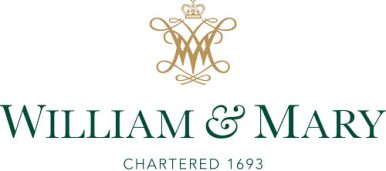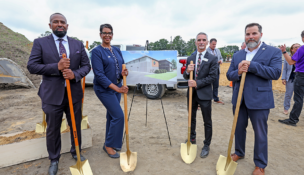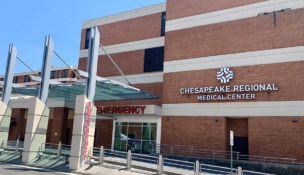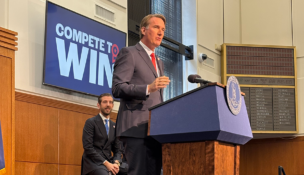Building an ecosystem
Marine, AI, health tech bloom from W&M research
Building an ecosystem
Marine, AI, health tech bloom from W&M research
Even though William & Mary is best known as a liberal arts “public Ivy,” it’s also a research university where professors are quietly producing innovative technology — and are less quietly trying to create an entrepreneurial network to support it.
Local capital isn’t as available in the Williamsburg area as it is around larger state research universities like the University of Virginia or Virginia Tech. “We don’t have much of a real startup ecosystem” in the region, acknowledges Jason McDevitt, director of W&M’s Technology Transfer Office.
But under the leadership of W&M President Katherine Rowe, the second-oldest institution of higher learning in the nation has been developing and encouraging entrepreneurship among students, faculty and the community through the Alan B. Miller Entrepreneurship Center, part of the university’s Raymond A. Mason School of Business. In partnership, W&M’s Tech Transfer Office has also been actively supporting the development of an ecosystem to commercialize university research in areas ranging from health technology to environmental protection and artificial intelligence.
“It’s a grab bag of different things. We’re always trying to find something that is commercially viable,” says McDevitt, whose one-person office plays a key role in bringing university research to market.
“I provide guidance and advice to students and faculty looking to develop their technologies, particularly university-owned technologies,” he says. That guidance “can range from technology development to business development to manufacturing to legal to anything else such that our technologies become useful to the public.”
That can include licensing patented and unpatented technologies “to big companies, small companies and startup companies,” McDevitt says. The university also helps form some spinoff companies based on licensing intellectual property created by students, faculty or staff.
Much of the research work at W&M is hands-on, says Dennis Manos, CSX professor of physics and applied science, and the university’s vice provost for research.
“The research has a practical basis; it’s not just scratching an itch. Each day a new problem arises. Solving those problems is what researchers are all about,” Manos says. W&M faculty and students “work sometimes cheek by jowl with industry and government to solve problems of interest and importance in providing fundamentally useful things.”
W&M inventors are rewarded with 50% of the net revenues from licensing activities. That’s at the high end of the range that universities are required to offer, McDevitt says. W&M’s earnings are reinvested in supporting research at the university.
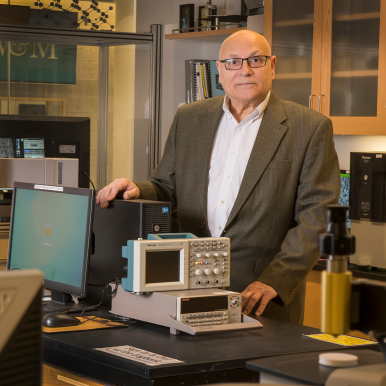
Most universities with significant research funding have some type of technology transfer office, all of which have the same general goals: to manage the university’s patent portfolio, to license technology and to promote commercialization of research products and processes.
Some universities have formal entrepreneurial seed funds to help spur spinoff companies, but W&M does not. However, McDevitt says that the university’s Tech Transfer Office does make some small grants from its licensing proceeds.
Valuable stock
One source for commercialized research tools at W&M is the Virginia Institute of Marine Science (VIMS), founded as the Virginia Fisheries Laboratory in 1940 through the efforts of the then-chair of the W&M biology department. It’s now among the largest marine research and education centers in the United States, with a front-row seat to the effects of sea-level rise.
The institute’s mission includes conducting research in coastal ocean and estuary science, educating students and providing advisory services to policymakers, industry and the public. William & Mary’s School of Marine Science is also based there.
VIMS’ research has helped revitalize Virginia’s oyster industry, which had suffered from overharvesting, pollution and disease, McDevitt says. “Our disease-resistant oyster bloodstock is widely licensed to hatcheries along the East Coast, particularly in the Chesapeake Bay.”
Oyster health is a major part of Jessica Moss Small’s job as director of VIMS’ Aquaculture Genetics and Breeding Technology Center (ABC), which was started with state funding in 1997 to address the oyster problem. A portion of VIMS’ funding continues to come from the state — in 2022, it received $27 million — and “our primary focus is breeding in Virginia environments,” Small says. However, the impact of the center’s oyster innovations stretches from Maine to North Carolina, where its oyster strains are sold commercially.
When royalties are paid by the hatcheries, “the payments are made to W&M’s Tech Transfer Office directly and then 80% of that income is paid to ABC, which helps fund the unfunded portion of our operations,” Small says.
Although Small started in the field of molecular biology, she came to VIMS
almost 20 years ago to complete her Ph.D. and became the aquaculture center’s director a year and a half ago.
“I really like the applied aspect” of the research, she says, and “the resources are tremendous. We have a brand-new facility,” the 22,000-square-foot Acuff Center for Aquaculture, which houses a shellfish research hatchery. “It’s state of the art. We’re becoming the hub of shellfish research.”
Health technology
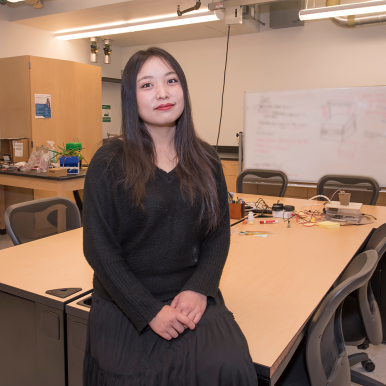
Other commercialized research at William & Mary is directed at solving health problems by drawing on resources from a variety of departments, including computer science and physics.
One disease W&M researchers are tackling is Parkinson’s, a progressive disorder that affects the nervous system and has no cure. Nearly one million people in the U.S. and more than 10 million people worldwide have the disease, according to the Parkinson’s Foundation.
Gang Zhou, a W&M computer science professor and inventor known for his work on smart health, is leading an interdisciplinary research team that’s tackling a Parkinson’s symptom known as “freezing of gait,” a temporary inability to move while walking.
The condition “is so dangerous,” says Ph.D. candidate Ken Koltermann, a member of Zhou’s team. “The patient doesn’t know it’s going to happen. It increases the risk of falling.”
A computer science scholar, Koltermann started at W&M studying hardware security, but his interest shifted. “I was introduced to a former student who was setting up a project for Dr. Zhou,” he says. “I became interested because my grandmother had Parkinson’s. This project kind of hits home to me.”
W&M’s team is collaborating with Virginia Commonwealth University’s nursing and medical schools on the project.
“We are the computing side. VCU is the health side of things,” Koltermann says. Together, the researchers created wearable sensors to help users keep walking as normal and avoid falling.
The sensors are attached to a patient’s ankles and send data via Bluetooth technology to a smart phone, which “acts as the brain,” according to Koltermann. With that data the phone determines whether a freeze is occurring. If so, it sends tailored vibrations to ankles.
In an effort to bring the product to market, “we’ve applied for patents through William & Mary and have received at least one commerialization grant,” says Koltermann, who is waiting to hear about another grant.
Meanwhile, William & Mary is also celebrating the imminent commercial launch of Auxulin, a dietary supplement co-invented by McDevitt that’s used to reduce the duration and magnitude of hyperglycemia for people with diabetes.
The patent for the supplement is being licensed by W&M to a startup company, which will pay sales royalties to the university. Auxulin Pharmaceuticals’ founders are Dr. Gary Ritz, an Ohio-based podiatrist, and his son, W&M Mason School of Business alum Tommy Ritz, both of whom have Type 1 diabetes.
In W&M’s physics department, Ran Yang leads a team of students in the Engineering Physics and Applied Design program who have engineered a smart laryngoscope. Known as the Britescope, the device uses AI to help paramedics insert a breathing tube into a patient’s trachea with greater precision. Although the Britescope is not yet licensed for commercial use, it’s still drawing plenty of attention, including from Virginia Innovation Partnership Corp., which approved a grant for the device last fall through its Commonwealth Commercialization Fund.
Now, in addition to being a physics lecturer, Yang’s learning to become a businessperson, she says, which brings up a whole host of new questions to research: “What is the revenue model? Do I want to license it or start up and run a company? I’m working with business mentors to find a clear pathway.”
McDevitt is among those mentors. “Jason helps me to navigate looking for patents. When he sees opportunities, he brings them to me,” Yang says. “William & Mary is supportive of faculty innovation, especially if you can bring it to the real world.”
AT A GLANCE
Founded
The second oldest university in the United States, William & Mary was established in 1693 under a royal charter signed by King William III and Queen Mary II of England, Ireland and Scotland. It became a public university in 1906.
Campus
Stretching across 1,200 acres in downtown Williamsburg, William & Mary’s campus includes the Martha Wren Briggs Amphitheatre, Lake Matoaka and College Woods. Its Wren Building, built in 1700, is the oldest U.S. university building still in use.
Enrollment (fall 2022)
Undergraduate: 6,797
Graduate: 2,251
Employees
The largest employer in Williamsburg, William & Mary employs 2,845 people.
Faculty
680 full-time and 165 part-time faculty
Students
Female: 58%
Male: 42%
Minority students: 32%
International students: 6%
Virginia residents: 60%
Tuition, fees, housing and financial aid (2022-23)
In-state tuition and fees: $23,970
Out-of-state tuition and fees: $47,196
Room and board: $13,534
Average financial aid awarded to full-time, in-state freshmen seeking assistance: $27,548
(2020-21)
T


